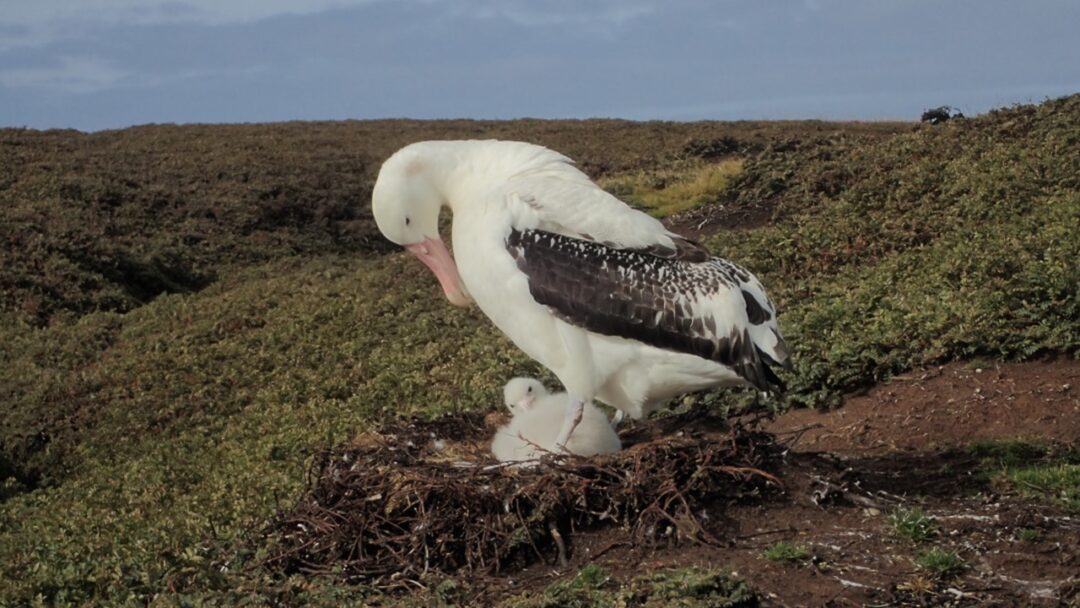
Albatrosses fly over the waves, using the force of the wind to their advantage. They learn from their fellows to get closer to the fishing boats. Not all of them are attracted to the boat the same way, the oldest and shiest being more inclined to pass their turn.
A flash of white light in the wake of a fishing vessel, it is an albatross approaching, attracted by a vessel. A study published in the Royal Society journal shows for the first time that this is not the naive curiosity of young birds, but a long term learning process shaped with age, which does not affect all these long distances travelers in the same way.
The obvious advantage, which these tracking birds find at the stern of longliners for example, is easy to catch food. The remains of the kitchen thrown overboard, old baits, or the result of a not so satisfying fishing. Everything is good to take. Just be careful with the hooks! Albatrosses often die from drowning, caught by the beak, a risk that many of them are ready to take, considering the number of birds embarking on this adventure behind the fishing boats. These new living conditions must probably modify the behavior of these large birds, and perhaps even upset their evolution. These are the questions that researchers from the CNRS and the British universities of Liverpool and Oxford are arising.

Between 2016 and 2020, 403 wandering albatrosses and 30 amsterdam albatrosses were equipped with small GPS trackers weighing a few tens of grams, capable of recording their movements. The birds are known by the CNRS scientists, who are visiting the albatross colonies of the Crozet, Kerguelen and Amsterdam archipelagos since the 1960s. The animals are measured and described from all angles: weight, age, sex… For the past 10 years, a personality test has been used to evaluate whether they are “shy” or “bold”. In total, 211 juveniles and immatures, 190 adults and 32 old specimens, flew equipped for the experiment.
A learning process
The older albatrosses get, the more ships they encounter. The extension of their fishing area during their lifetime is not the main explanation, biologists note. It is their attraction to fishing boats that increases with age. According to the authors, following a ship in the middle of the sea is not instinctive for thoses animals. They start by joining their fellow birds – an innate natural behavior -, and will gradually associate the ships with the presence of other birds. With time and experience, they will venture out on their own to approach a ship and integrate fishermen into their way of life.
“Shy” or older birds are less likely to chase a longliner, and if they do, they have more difficulty feeding during the fishing phases, when it is necessary to be assertive. The arrival of industrial fishing in the Southern Ocean could well favor the “bold” characters, and modify the evolution of the fishing bird populations. Although during the study 28 percent of the birds never approached a ship, finding food on either side of the polar front.
Camille Lin, Polar Journal
Learn more about this topic:





